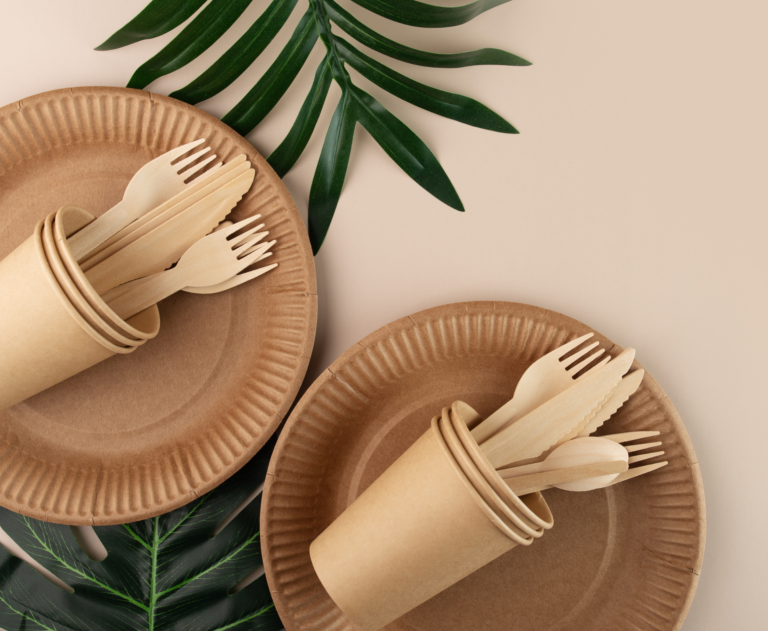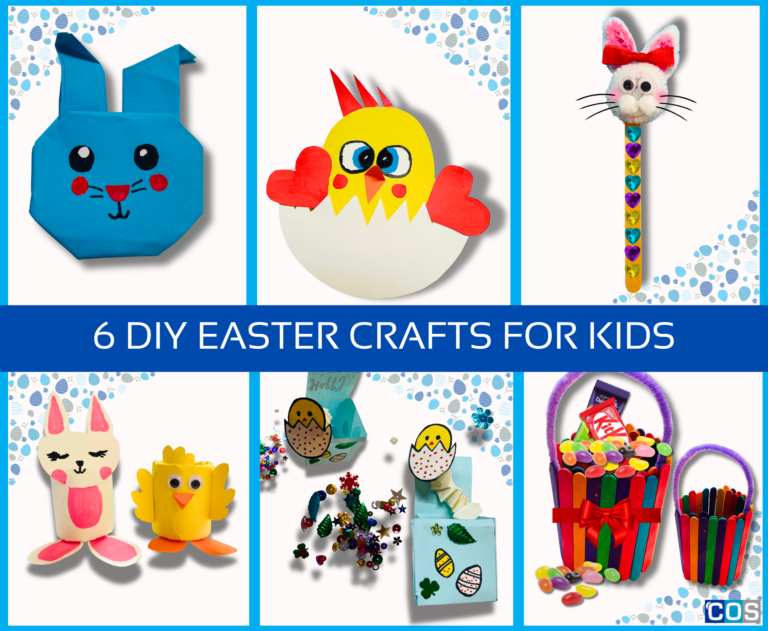Whether it’s a grand event, a business function, a takeaway order, or a casual gathering, disposable cutlery and crockery are the ultimate go-to. Designed for convenience, affordability, and ease of use, disposable cutlery and crockery take the stress out of cleanup, making them a staple for various occasions.
A 2022 Statista survey revealed that over 70% of Australians used disposable cutlery or crockery in the past six months, driven by events, picnics, and takeaway meals. Fast-food outlets and casual dining accounted for 45% of this usage, with corporate catering and public events contributing another 35%. In 2023, IBISWorld valued Australia’s disposable food packaging industry at $1.6 billion, with single-use cutlery and crockery playing a significant role. The Australian disposable cutlery market is projected to grow at a CAGR of 1.8% between 2024 and 2030, fuelled by demand for convenience, according to 6Wresearch.
As concerns about plastic waste and its impact on landfills and marine pollution grow, the demand for sustainable disposable cutlery and crockery is transforming the industry, aligning convenience with environmental responsibility. IBISWorld projects the sustainable disposable cutlery and crockery segment to grow 5% annually, driven by consumer demand for environmentally friendly alternatives. Roy Morgan Research (2023) found that 65% of Australians prefer eco-friendly or biodegradable options, with 72% of Millennials and Gen Z willing to pay extra for sustainable products.
As businesses and consumers alike embrace these alternatives, the market is responding with innovative designs that balance functionality with sustainability. For example, many manufacturers are now producing compostable products that mimic the strength and utility of conventional plastics while meeting the growing demand for eco-friendly solutions. Innovative materials like bamboo, cornstarch, and sugarcane (bagasse) are now widely used for compostable cutlery and plates, offering reduced environmental impact. This shift not only supports waste reduction but also aligns with global efforts to combat plastic pollution and promote circular economies.
Government policies and schemes introduced in the Australian Disposable Cutlery Market
The Australian government has introduced a range of policies and initiatives designed to tackle plastic waste, significantly influencing the disposable cutlery market. Key measures include state-level bans on single-use plastics, comprehensive recycling programs, and financial incentives for businesses embracing sustainable practices. These efforts align with Australia’s broader commitment to reducing environmental impact and fostering a circular economy.
Biodegradable and compostable cutlery solutions are gaining momentum as a result of these policies. Government support for innovative materials and eco-friendly alternatives has encouraged businesses to adopt sustainable options, which in turn cater to the increasing consumer demand for environmentally responsible products. In addition to legislative bans, programs such as the National Plastics Plan and state-led waste reduction strategies emphasise transitioning away from traditional plastic products.
Common Disposable Cutlery & Crockery Types
1. Plastic
Plastic remains the most commonly used material for disposable cutlery and crockery due to its lightweight, affordability, and durability. The majority of plastic cutlery and crockery is made from polystyrene or polypropylene, making it easy to produce and readily available.
According to the Australian Government’s National Waste Policy, the volume of plastic waste generated in Australia continues to rise, with a substantial portion ending up in landfills and the natural environment. Research from the University of New South Wales highlights that plastics can leach harmful chemicals, particularly under high-temperature conditions, posing potential risks to food safety and human health.
To address these issues, it is crucial to adopt more sustainable alternatives, such as recyclable or biodegradable options, which can reduce the environmental footprint and promote a circular economy.
2. Paper and Cardboard
Widely used for plates, cups, and bowls, paper and cardboard cutlery & crockery are often coated with a thin layer of water-resistant material to prevent leaks.
According to a 2021 report by the Australian Government Department of Agriculture, Water and Environment, over 89% of Australia’s waste comes from packaging materials, with paper and cardboard making up a significant portion of this waste.
Research conducted by the National Waste Report in 2022 highlights that over 3.4 million tonnes of paper and cardboard were disposed of in Australia, with only a small fraction being recycled.
3. Wood
Naturally sourced and biodegradable, wood is increasingly used for disposable cutlery, offering both sustainability and an aesthetic appeal. Wooden cutlery is made from bamboo or birchwood and is biodegradable, which makes it an environmentally sustainable option for parties, picnics, and other events.
4. Bamboo
Bamboo cutlery and crockery are sustainable, eco-friendly alternatives to traditional plastic and other disposable options. These products are crafted from natural bamboo, which is a fast-growing, renewable resource, making them both environmentally friendly and durable.
Bamboo cutlery is lightweight yet strong, making it suitable for a variety of uses, from picnics and outdoor events to eco-conscious cafes and restaurants. Bamboo crockery, including plates, bowls, and trays, provides a natural look and feel while being water-resistant and sturdy enough for both hot and cold foods.
Bamboo cutlery and crockery are 100% biodegradable and compostable, breaking down naturally without releasing harmful chemicals or microplastics. Bamboo products are a safer and more sustainable option for anyone seeking to minimise waste and promote sustainability.
5. Compostable Bioplastics (PLA)
Compostable Bioplastics (PLA) offer a sustainable solution to reducing plastic waste. Derived from renewable resources such as cornstarch, sugarcane, or other plant-based materials, making them more environmentally friendly than traditional petroleum-based plastics.
When disposed of properly in industrial composting facilities, PLA bioplastics undergo a natural breakdown process, transforming into compost without leaving behind harmful residues. This decomposition process contributes to nutrient-rich soil, reducing the environmental impact of plastic waste and promoting a circular economy.
Unlike conventional plastics that can take hundreds of years to decompose in landfills, PLA bioplastics break down much more quickly under controlled industrial conditions. Additionally, they produce minimal greenhouse gas emissions during their lifecycle, supporting efforts to combat climate change.
Compostable bioplastics present a promising alternative for businesses, households, and industries aiming to minimise their carbon footprint and foster a more sustainable future.
6. Palm Leaf and Sugarcane (Bagasse)
Plates and bowls crafted from agricultural byproducts like palm leaves or sugarcane pulp are 100% compostable, providing a greener alternative to traditional disposable cutlery and crockery.
Bagasse is an agricultural residue, which is completely safe for the environment, and it is also available in abundant quantities. It’s a strong raw material that provides the qualities of rigidity and strength to disposable tableware.
In addition to its environmental benefits, Bagasse can also be manufactured from recycled paper, reducing waste even further. Paper-based cutlery and crockery, such as cups, glasses, and plates, can be produced in various sizes and shapes depending on the intended use.
7. Wax-coated
Most of the disposable tableware is coated/laminated with plastic or wax to keep them waterproof. Laminating or wax coating helps the containers to hold the food items and drinks efficiently without letting them leak from the containers. The material used for lamination or wax coating is toxin-free, making the cutlery and crockery safe for eating.
8. EPS (expanded polystyrene) foam cutlery and crockery
Commonly used in Australia for their lightweight, cost-effective, and disposable nature. Due to environmental concerns, including its low recyclability and long decomposition time, EPS foam is increasingly being phased out in favor of more sustainable alternatives.
In the past, EPS foam products, such as plates, bowls, cups, and cutlery, were widely used in food service and catering due to their affordability and convenience. However, the environmental impact of EPS foam, including its contribution to landfill waste and pollution, has led to stricter regulations and bans in several states and territories, including Victoria and Queensland.
As a response to these concerns, there is a growing shift toward eco-friendly alternatives like biodegradable, compostable, and plant-based materials. These options are designed to break down more efficiently, reducing the environmental footprint.
Companies and consumers alike are seeking sustainable solutions such as bamboo, sugarcane, and palm leaf products, which offer similar convenience while being more environmentally friendly.
Why Use Non-Toxic Biodegradable Cutlery?
1. Food safety: Traditional plastic cutlery can release harmful chemicals such as BPA (bisphenol A) and phthalates, which are linked to various health issues including hormone disruption and cancer. Biodegradable cutlery is typically made from natural, non-toxic materials that do not leach harmful substances into food, even when exposed to heat.
2. Non-toxic and safe: Biodegradable cutlery is crafted from natural materials, ensuring that they are free from harmful chemicals such as BPA, phthalates, and synthetic dyes. This makes them safe for use, particularly in food service industries like catering, hospitals, schools, and events, where health and safety are paramount.
3. Compliance with relevant provisions: Many biodegradable products meet stringent safety standards set by regulatory bodies, ensuring they are safe for food contact. Certifications such as FDA approval, ASTM D6400, and EN 13432 provide assurance that these products have been tested and verified to be free from harmful chemicals and safe for consumer use.
4. Build brand identity: Using biodegradable cutlery can significantly enhance a company’s brand image by demonstrating a commitment to sustainability and environmental responsibility. This can attract eco-conscious consumers and differentiate a business in a competitive market.
5. Environmental impact: Traditional plastic cutlery contributes significantly to the global plastic waste problem. Once discarded it takes hundreds of years to decompose and ends up in landfills or oceans, causing long-term environmental damage. Biodegradable cutlery, on the other hand, is designed to break down naturally, reducing the burden on landfills and oceans.
6. Sustainable Material Sourcing: Biodegradable cutlery is often made from sustainably sourced raw materials. Bamboo and sugarcane fibres are rapidly renewable, ensuring that the resources used are not depleted over time. This sustainable sourcing supports environmental conservation efforts and encourages responsible manufacturing practices.
7. Waste Management: Biodegradable cutlery supports more efficient waste management systems by decomposing quickly and organically, minimising the burden on landfills and waste management facilities. This leads to a more streamlined waste processing system and reduces the need for large-scale landfills.
How to Choose Disposable Cutlery & Crockery
Businesses must consider several factors when choosing disposable cutlery and crockery to ensure safety, compliance, and customer satisfaction. Here are key considerations:
1. Material options: Choose materials that are non-toxic and safe for food contact, such as PLA, bamboo, bagasse or wood. Opt for biodegradable and compostable materials to minimise environmental impact.
2. Manufacturing Processes: Ensure that manufacturing processes adhere to high standards to prevent contamination and chemical leaching. It’s better to look for products that have certifications indicating they meet safety and environmental standards.
3. Regulatory Standards and Certification: Compliance with regulatory standards and obtaining relevant certifications are crucial for ensuring the safety and acceptance of disposable tableware. Common certifications include:
- ASTM D6400: Certification for compostable plastics.
- AS 2070:1999: An Australia standard that applies to food contact materials that are made of plastics materials, such as resins, granules, and powders.
- Home Compostable (AS5810 and NF T51-800) and Industrially Compostable (AS4736 and EN13432): Compostable to Australian and European standards
- B Corp Certified: To meet higher levels of social and environmental performance, transparency and accountability.
- FSC™ Certified Paper and Wood Products: Packaging solutions made from rapidly renewable, sustainably sourced materials.
4. Supplier and Brand Considerations: When selecting suppliers, look for reputable brands that specialise in eco-friendly and durable disposable products. Many companies today offer eco-conscious disposable solutions and provide a wide variety of options to suit different needs.

